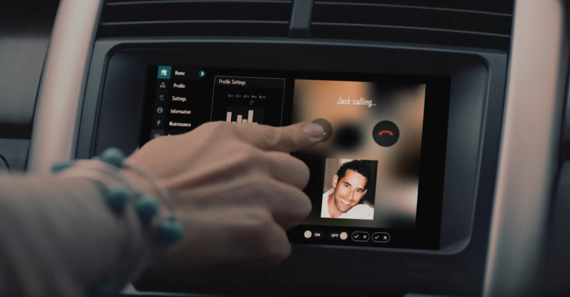In our busy and increasingly always-connected lives, it is not uncommon for us to catch up with our daily to-do list -- for work and our personal lives -- whenever and wherever we can. For many Americans, the commute in or back home from work, with its logjam of slow moving traffic, represents valuable time lost and an opportunity to catch up and clear some items off of that to-do list.
The smartphone has made that easier than ever, but there's an obvious risk to using one while driving, particularly for tasks like texting, emailing, and updating social media. In response, the auto and tech industries have stepped in by including infotainment systems that wrap communications, music and media up into a seemingly easy to use hub at the center of our cars.
But consider the following scenario. You're running late to a meeting so you send a voice-text to your colleague through your car's system. It doesn't transcribe exactly what you intended so you place a hands-free call to head off any confusion. Your colleague lets you know the boss is not very happy with a recent report. You disconnect the call quickly, but you can't stop thinking about your angry boss as you approach a yellow light, which turns red just as you enter the intersection.
You've already disconnected from the call, so you are now fully focused on the task of driving right?
Probably not, according to a new study just released from the AAA Foundation for Traffic Safety (AAAFTS). The results reveal that driver distraction can persist well beyond the completion of a hands-free call or other voice controlled task.
In this third phase of the multi-phase study, research shows that after completing several types of hands-free tasks, driver distraction lingered for up to 27 seconds. For a car travelling 40 miles per hour, that translates to almost six football fields or almost five city blocks. That means if you're stopped at a light and you're checking email or sending a text with voice controls, even after you've finished the task and the light turns green, that task is still travelling with you. Your head is still in the phone (or car system) and not focused on driving.
Unfortunately, many drivers don't know enough about the risks of using these hands-free features. A 2014 NSC poll found that 53 percent of the respondents believed the hands-free systems were safe to use while driving because they were included in their cars or smartphones. Contrary to the research, the same study also reported that 80 percent of drivers perceive hands-free as a safer alternative to handheld communication.
Remember that the focus of these systems is on keeping us connected, not necessarily safe. This just highlights how fast technology and the auto industry are moving relative to the safety research. These systems are made available to us and are usually a selling point when purchasing a new car. In a showroom setting, it feels like we're on the bleeding edge of technology, but it isn't until we get on the road that drivers discover how distracting these systems can be.
The AAAFTS study also showed that there is a lot of variability in the usability of voice to text car features and smartphones; some were easier to use and some less intuitive. The more complex systems required more mental capacity from the driver, which increased the level of distraction. Practicing with the car systems did not significantly improve one's performance.
Technology continues to evolve at a breakneck speed; unfortunately safety has not kept pace. In a perfect world, hands-free car systems and smartphones are easy to use, cognitively less demanding and keep driver distraction to a bare minimum. One day we may get there, but at present, infotainment systems and smartphones are still too distracting -- with distractions persisting longer than any of us realized. For now, the best advice for drivers remains the same: refrain from engaging in any task that takes your focus away from what's important -- arriving at your destination safely.

